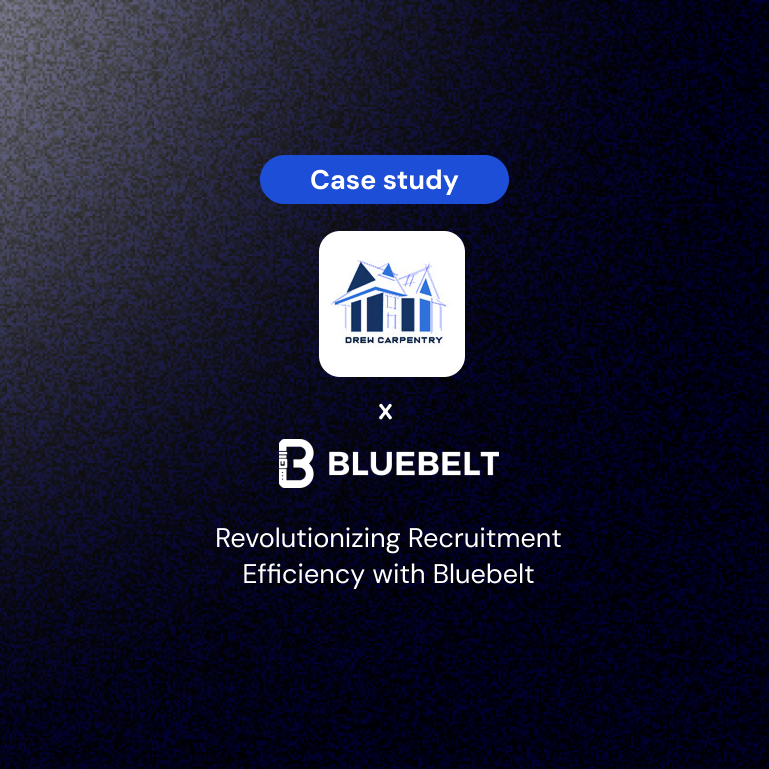
The Problems with the 'Time-to-Hire' Metric: Why Job-Fit Should Be Your Focus


The Problems with the 'Time-to-Hire' Metric: Why Job-Fit Should Be Your Focus
In the fast-paced world of recruitment, the 'time-to-hire' metric has long been a staple for measuring the efficiency of hiring processes. However, this metric is increasingly being scrutinized for its limitations and potential drawbacks. While speed is important, focusing solely on how quickly you can fill a position can lead to a host of issues, including poor candidate quality and high turnover rates. In this blog, we'll explore why 'time-to-hire' is a flawed metric and why job-fit should be your primary focus. We'll also introduce you to Bluebelt, a revolutionary tool that helps you find the right candidates quickly and effectively.
The Limitations of 'Time-to-Hire'
1.
The primary issue with the 'time-to-hire' metric is that it prioritizes speed over quality. When the main goal is to fill a position as quickly as possible, recruiters may overlook crucial aspects such as skills, experience, and cultural fit. This can result in hiring candidates not well-suited for the role or the company, leading to poor performance and high turnover rates.
2.
A fast hiring process often means that due diligence is sacrificed. Without thorough vetting, the likelihood of hiring candidates who are not a good fit increases. This can lead to higher turnover rates, which disrupts team dynamics and incurs additional costs for the company.
3.
When speed is the primary focus, the candidate experience often takes a backseat. Rushed interviews and lack of communication can leave candidates with a negative impression of your company. This can harm your employer brand and make it more difficult to attract top talent in the future.
4
While a quick hire may solve an immediate need, it can create long-term problems. Poor hires can lead to decreased productivity, lower employee morale, and increased training costs. In the long run, these issues can outweigh the benefits of a speedy hiring process.
Why Job-Fit Should Be Your Primary Metric
1.
When you focus on job-fit, you're more likely to hire candidates who have the skills, experience, and cultural alignment needed to excel in the role. This leads to better performance and higher productivity, benefiting both the employee and the company.
2
Hiring candidates who are a good fit for the role and the company culture reduces the likelihood of turnover. Employees who feel aligned with their job and the company are more likely to stay long-term, saving you the costs and disruptions associated with frequent hiring.
3
Employees who are well-suited for their roles are generally happier and more engaged. This leads to a positive work environment, higher employee morale, and better team dynamics.
4
A focus on job-fit enhances the candidate experience, leaving candidates with a positive impression of your company. This can improve your employer brand and make it easier to attract top talent in the future.
The Drawback: Time
One of the main challenges of focusing on job-fit is that it can take longer to find the right candidate. Thorough vetting processes, multiple interviews, and detailed assessments can extend the hiring timeline. However, the benefits of hiring the right candidate far outweigh the drawbacks of a longer hiring process.
How Bluebelt Can Help
This is where Bluebelt comes in. Bluebelt is a cutting-edge tool designed to help companies in heavy industries like construction and manufacturing assess candidates quickly and effectively. Using AI, Bluebelt conducts phone screens and creates a comprehensive job-fit score for each candidate. This allows you to focus on quality without sacrificing speed.
AI-Powered Assessments
Bluebelt uses advanced AI algorithms to assess candidates' skills, experience, and cultural fit. This ensures that you get a detailed and accurate picture of each candidate, helping you make informed hiring decisions.
Comprehensive Job-Fit Scores
Bluebelt generates a comprehensive job-fit score for each candidate, making it easy to compare and evaluate candidates. This score takes into account various factors, including skills, experience, and cultural alignment, ensuring that you find the best fit for the role and the company.
Speed and Efficiency
While focusing on job-fit can take time, Bluebelt streamlines the process, allowing you to find the right candidates within days, not weeks or months. This means you can enjoy the benefits of a thorough vetting process without the drawbacks of a prolonged hiring timeline.
Conclusion
The 'time-to-hire' metric may have its place, but it should not be the primary focus of your hiring process. Prioritizing job-fit leads to better performance, lower turnover rates, enhanced employee morale, and an improved employer brand. While finding the right candidate can take time, tools like Bluebelt make it possible to achieve both quality and speed. By leveraging AI-powered assessments and comprehensive job-fit scores, Bluebelt helps you find the right candidates quickly and effectively.
Ready to revolutionize your hiring process? Visit [Bluebelt.co](https://bluebelt.co) to learn more about how we can help you find the perfect fit for your roles.
